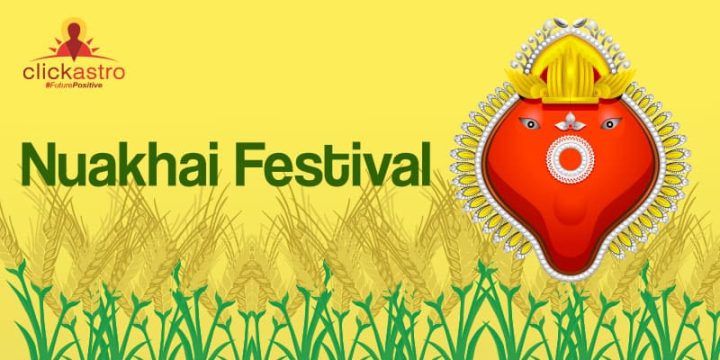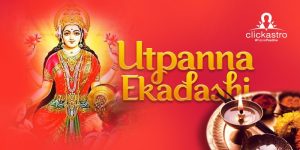Nuakhai, a culturally significant festival, is celebrated primarily in the Indian state of Odisha, holding a special place in the hearts of its people. It centers around expressing gratitude for the abundant harvests that sustain their lives. The name “Nuakhai” itself is derived from “nua,” meaning new, and “khai,” meaning food, signifying the offering of newly harvested rice to the gods at the start of the harvest season.
Over time, Nuakhai has become a widely celebrated
festival throughout Odisha, with a fixed date on the fifth day of the lunar fortnight of Bhadra, typically following
Ganesh Chaturthi. In 1991, the Odisha government recognized it as an official holiday.
The 2023 Naukhai Festival is on September 20, Wednesday.
Historical research suggests that Nuakhai’s origins date back to the Vedic period (circa 1500 – 500 BCE). During this time, sages identified five crucial stages in the annual rice cultivation cycle – the tilling of the land, the sowing of seeds, the initial cutting of crops, the harvesting of grains, and the storing of grains. Nuakhai likely evolved from the practice of offering the first crop to the gods during the harvesting stage to seek their blessings.

Modern Nuakhai celebrations involve making offerings to deities in temples and domestic altars. The festival shares common elements with other Hindu celebrations, such as wearing new clothes, exchanging greetings with friends and family, showing respect to elders, singing, dancing, and feasting. This ancient festival beautifully showcases the deep connection between the people of Odisha and their agricultural heritage, highlighting the importance of gratitude and community in their culture.
In this blog, we’ll delve into the rich traditions, customs, and the essence of Nuakhai, exploring why it remains an integral part of Odia culture.
Origins of Nuakhai
The origins of the Nuakhai festival, while shrouded in the mists of time, can be traced back to oral traditions that place its emergence in the 14th century. This period coincides with the reign of Raja Ramai Deva, the visionary founder of the Patna kingdom in what is now the
Balangir district of western Odisha.
Raja Ramai Deva recognized the paramount importance of transitioning from a subsistence economy based on hunting and food gathering to settled agriculture to build a self-sustaining kingdom. He understood that agriculture was the key to generating the surplus resources necessary to establish and maintain a thriving state.
In the process of state formation in the Sambalpuri region, the Nuakhai festival assumed a pivotal role. It became a powerful symbol, promoting agriculture as not just an occupation but a way of life. It was under Raja Ramai Deva’s patronage and vision that Nuakhai evolved into an integral part of Sambalpuri culture and heritage. Thus, the credit for elevating Nuakhai to its cherished status in the region’s history and culture can be rightfully attributed to him.
Timing of Nuakhai:
The timing of the Nuakhai festival, in its early years, lacked a fixed date. It typically occurred during Bhadraba Sukla Pakhya when the Kharif crop of rice began to ripen. The rationale behind celebrating it in the month of Bhadrava, even before the grain was fully ready for harvest, was to offer the crop to the presiding deity before any birds or animals could consume it.
For the upcoming Nuakhai festival in 2023, the auspicious time or ‘Lagna’ has been determined. The newly harvested rice, known as ‘Navanna,’ will be offered to Goddess Pataneswari, the patron deity of Bolangir, between 10.28 am and 10.41 am on September 20th.
The traditional process involved priests finalizing the auspicious time following a puja at the Shailashree Palace household office. Nuakhai adheres to the ‘Panchami tithi’ of the Odia month of Bhadraba.
It’s important to note that Nuakhai is a festival cherished by people from all walks of life, transcending socio-economic boundaries. It marks the celebration of the new rice paddy harvest, a vital event in a region where agriculture serves as the primary occupation. This agrarian festival reflects the deep-rooted connection between the people of the region and the land that sustains them.
Rituals and Traditions
The preparations for Nuakhai in Western Odisha commence a fortnight ahead of the actual celebration day. This vibrant festival is intertwined with nine colors, each corresponding to a set of rituals that serve as a prelude to the main event. These nine colorful stages are as follows:
- Beheren – This marks the announcement of a gathering to determine the festival’s date.
- Lagna Dekha – Here, the exact date for partaking of the new rice is set.
- Daka Haka – It involves sending out invitations to loved ones.
- Sapha Sutura and Lipa Puchha – A focus on cleanliness and preparations.
- Ghina Bika – The time for purchasing necessities.
- Nua Dhan Khuja – The quest for the new crop begins.
- Bali Paka – A significant stage where the Prasad (offering) is taken to the deity, finalizing Nuakhai.
- Nuakhai – The heart of the celebration, involving partaking of the new crop as Prasad, followed by lively dancing and singing.
- Juhar Bhet – A moment to pay respects to elders, wishing them well for longevity, happiness, and prosperity.
Nuakhai serves as an occasion for people to put aside their differences and mend relationships. In the evening, community members come together, exchanging greetings and well wishes. It’s a time when all discord is set aside and even separated family members unite under one roof. In many villages and towns, the festivities include Sambalpuri and folk dances and songs that express the joy of the harvest season, further enhancing the vibrant spirit of Nuakhai.
The Nuakhai Juhar
The commencement of Nuakhai is marked by a thorough cleaning and adornment of households, often accompanied by the donning of new and traditional attire crafted from Sambalpuri fabrics. Following the offering of Nabanna to the goddess and expressions of gratitude to Mother Earth for her provision of sustenance, people partake in Nabanna, share Nua or rice grains with family and friends, and extend their warm greetings.
A distinctive and heartwarming facet of Nuakhai is the “Nuakhai Juhar.” During this tradition, individuals pay visits to the residences of their elders to seek blessings and convey their gratitude. In return, elders bestow their blessings and often exchange gifts with the younger generation.
Nuakhai Juhar signifies the act of sharing gifts with loved ones, offering well wishes on this occasion, and coming together as a family, symbolizing unity and harmony. It’s a time when differences are set aside, and the bonds of relationships are renewed. In the evening, people greet one another with humility, seeking blessings from their respected elders, further solidifying the sense of togetherness that Nuakhai fosters.
Cultural Significance
Nuakhai serves as a vibrant celebration that underscores the value of social bonds and the strengthening of family ties. This cherished day follows Ganesh Chaturthi and resonates deeply with farmers, uniting them in festivities.
On this auspicious occasion, people from different corners of the country return to their ancestral homes, dressed in new attire, to partake in rituals, offer prayers, and create special culinary delights. The festival’s roots extend back to the Vedic era, where sages deliberated on Panchyajna, with Pralambana yajna focusing on the cutting of new crops and invoking blessings from the mother goddess.
Nuakhai, in essence, imparts vital lessons to the current generation, emphasizing the importance of agriculture and the indispensable role of farmers in the nation’s progress.
This festival encourages individuals to set aside their differences, providing an opportunity to mend relationships and begin anew. As a grand finale, Nuakhai culminates in diverse cultural performances encompassing dances, dramas, and folk songs, enabling everyone to revel in their shared heritage.
Beyond the festivities, Nuakhai is not mere ostentation; it is a profound celebration of food grain worship. It fosters a deep-seated appreciation for the growth of rice, symbolizing life itself. Nuakhai Festival conveys a powerful message about the significance of agriculture and the pivotal role played by farmers in sustaining the nation’s economy.
Nuakhai in Modern Times
Nuakhai, rooted in ancient traditions, has gracefully adapted to the changing times, retaining its cultural significance while embracing modern elements. In contemporary times, this cherished festival has not only preserved its traditional charm but has also evolved to encompass diverse expressions of celebration.
One notable evolution is the inclusion of grand processions and cultural programs. These vibrant events showcase the rich heritage of Odisha and the Sambalpuri culture, featuring colorful displays of traditional dances, folk music, and artistic performances. These processions often meander through the streets, captivating both locals and visitors with their splendor.
Furthermore, Nuakhai’s reach has extended beyond rural landscapes to urban areas, where the agrarian connection may not be as pronounced. Even in cities, communities come together to honor their roots, highlighting the festival’s ability to unite people irrespective of their surroundings.
In essence, Nuakhai has seamlessly transitioned into the modern era, demonstrating its enduring relevance and the timeless spirit of gratitude, unity, and celebration. It serves as a beautiful bridge connecting the past and the present, ensuring that its cultural significance remains vibrant and meaningful for generations to come.
Nuakhai Festival stands as a testament to the profound values of gratitude and community that have been integral to Odisha’s culture for generations. This vibrant celebration, rooted in the rhythms of nature and the toil of farmers, encapsulates the very essence of thanksgiving.
As the golden grains of rice are offered to the deities, Nuakhai symbolizes a deep appreciation for the bountiful harvest that nourishes the people of Odisha. It serves as a poignant reminder of the indispensable relationship between humankind and the land that sustains them.
In the tapestry of modernity, Nuakhai has seamlessly adapted, embracing new dimensions while staying true to its heritage. It is a bridge that connects the past and the present, uniting communities and fostering a sense of unity that transcends differences.
Nuakhai Festival is not merely a ritual; it’s a cherished cultural treasure, a vibrant mix of traditions, and a testament to the resilience of a people deeply rooted in their land. It is a celebration that embodies the spirit of togetherness, a reminder of the enduring connection between humans and the Earth, and a festival that is undeniably worth cherishing for its timeless significance.

 Modern Nuakhai celebrations involve making offerings to deities in temples and domestic altars. The festival shares common elements with other Hindu celebrations, such as wearing new clothes, exchanging greetings with friends and family, showing respect to elders, singing, dancing, and feasting. This ancient festival beautifully showcases the deep connection between the people of Odisha and their agricultural heritage, highlighting the importance of gratitude and community in their culture.
In this blog, we’ll delve into the rich traditions, customs, and the essence of Nuakhai, exploring why it remains an integral part of Odia culture.
Modern Nuakhai celebrations involve making offerings to deities in temples and domestic altars. The festival shares common elements with other Hindu celebrations, such as wearing new clothes, exchanging greetings with friends and family, showing respect to elders, singing, dancing, and feasting. This ancient festival beautifully showcases the deep connection between the people of Odisha and their agricultural heritage, highlighting the importance of gratitude and community in their culture.
In this blog, we’ll delve into the rich traditions, customs, and the essence of Nuakhai, exploring why it remains an integral part of Odia culture.







